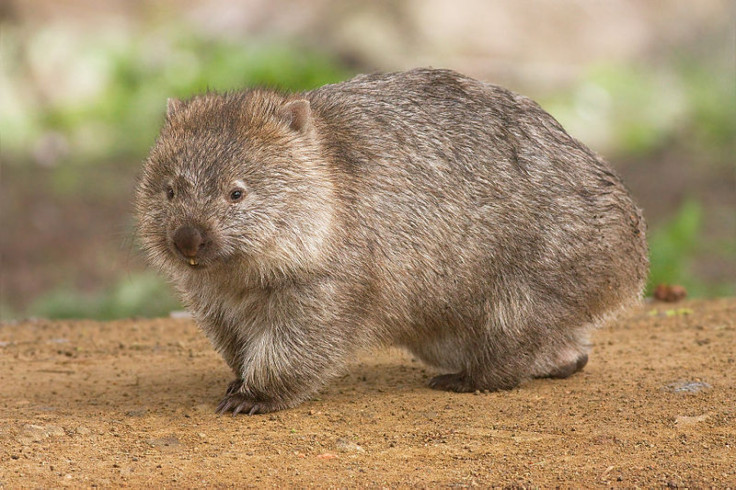Wombat Poop: Why Is It Cubed? The Reason For The Australian Marsupial’s Square Droppings

When you get a newsworthy tidbit about animal poop, it's hard not to share. Such was the case Wednesday when some Reddit users passed around an interesting item on wombat droppings, with some readers incredulous they'd just upvoted a piece about animal dung.
In case you were wondering, wombat poop doesn’t conform to the geometric laws of everyday cylindrical poop. The Australian marsupial’s unique droppings are more cube-shaped than tubular. Which makes us wonder: What are the benefits of having distinctly square doo-doo?
For the wombat, a stubby-legged, muscular creature native to southeastern Australia, leaving bits of scat around is like handing out business cards. It tells other animals who he is – his species, sex, health, age and sexual maturity. OK, so maybe it’s more like offering up your medical records. Either way, wombat poop will tell a passing marsupial everything he or she needs to know about its owner.
Every morning, the wombat drops 80 to 100 cube-shaped pellets around its burrow, unpacking four to eight of them every time it pauses. According to io9, the wombat’s poop helps the creature mark its turf – like a Great Wall of Dung defining the animal’s territory.
And there’s a good reason the wombat’s poop is square. Animal Planet notes that the wombat likes to pop a squat on top of logs and rocks so that his poop is more visible to passersby. The flat sides of the wombat’s cubed droppings keep the pellets from rolling off their pedestals.
“If wombat poop were rounded, like that of koalas, it would probably roll off its intended drop point,” Animal Planet reported.
The answer to the wombat’s cubed poop isn’t in the shape of its sphincter. There’s no square nozzle, like a Play-Doh pump for rectangles, making those quadrilateral turds.
According to Today I Found Out, the unique shape of the wombat’s poop derives from its moisture content. The wombat has the driest poop of any mammal, a result of its insanely long digestive tract. It can take 14 to 18 days for food to get processed and excreted. “This process allows the wombat to absorb the maximum amount of nutrients from its food before it turns it into a smelly Lego block,” Today I Found Out notes.
As the wombat’s food travels through its body, all the moisture is absorbed, producing very solid and compact droppings. It’s a smart tactic in arid conditions, where moisture can be hard to come by.
© Copyright IBTimes 2025. All rights reserved.






















